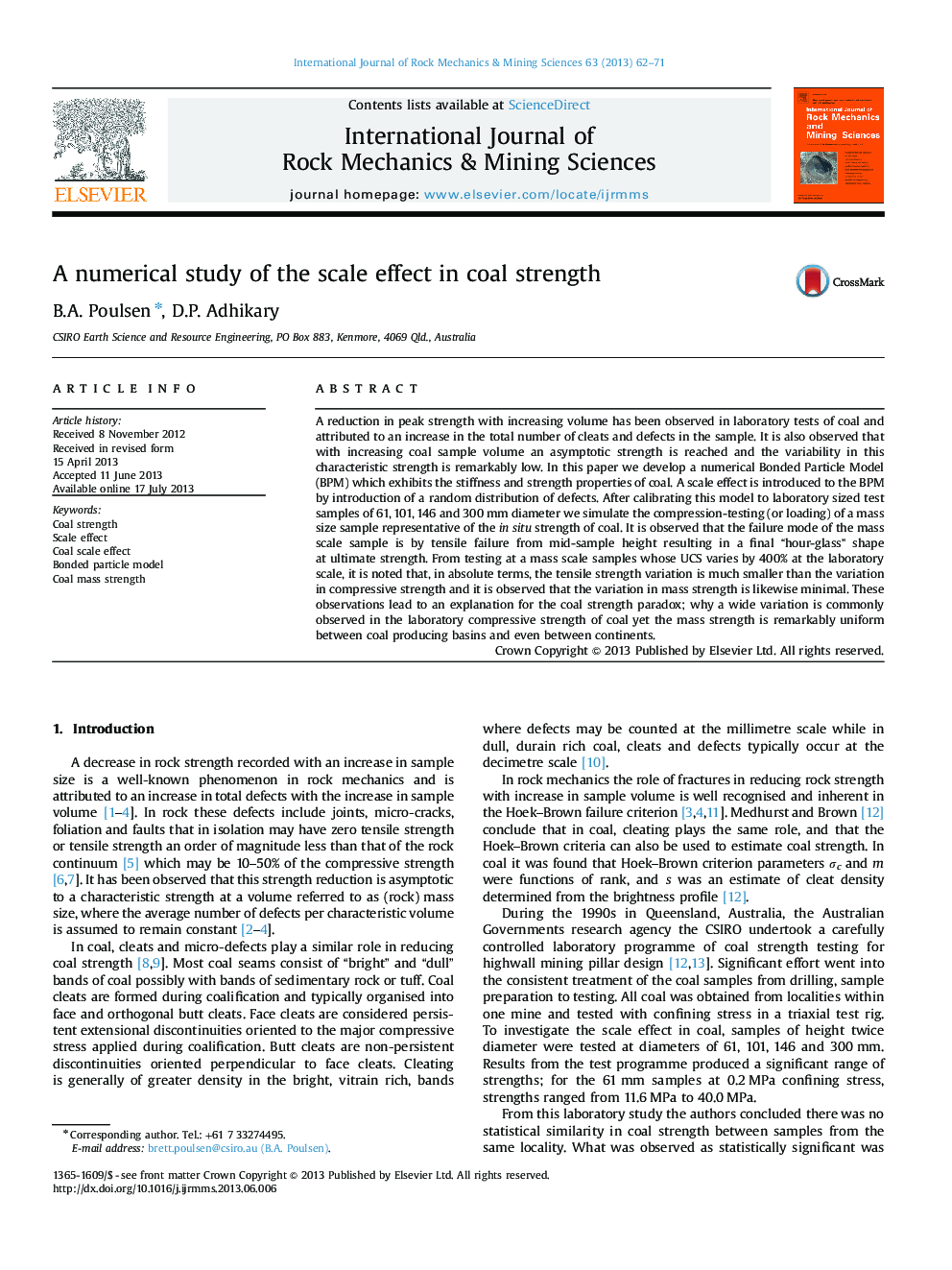| Article ID | Journal | Published Year | Pages | File Type |
|---|---|---|---|---|
| 7206772 | International Journal of Rock Mechanics and Mining Sciences | 2013 | 10 Pages |
Abstract
A reduction in peak strength with increasing volume has been observed in laboratory tests of coal and attributed to an increase in the total number of cleats and defects in the sample. It is also observed that with increasing coal sample volume an asymptotic strength is reached and the variability in this characteristic strength is remarkably low. In this paper we develop a numerical Bonded Particle Model (BPM) which exhibits the stiffness and strength properties of coal. A scale effect is introduced to the BPM by introduction of a random distribution of defects. After calibrating this model to laboratory sized test samples of 61, 101, 146 and 300Â mm diameter we simulate the compression-testing (or loading) of a mass size sample representative of the in situ strength of coal. It is observed that the failure mode of the mass scale sample is by tensile failure from mid-sample height resulting in a final “hour-glass” shape at ultimate strength. From testing at a mass scale samples whose UCS varies by 400% at the laboratory scale, it is noted that, in absolute terms, the tensile strength variation is much smaller than the variation in compressive strength and it is observed that the variation in mass strength is likewise minimal. These observations lead to an explanation for the coal strength paradox; why a wide variation is commonly observed in the laboratory compressive strength of coal yet the mass strength is remarkably uniform between coal producing basins and even between continents.
Related Topics
Physical Sciences and Engineering
Earth and Planetary Sciences
Geotechnical Engineering and Engineering Geology
Authors
B.A. Poulsen, D.P. Adhikary,
